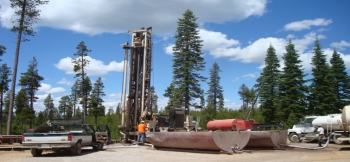Learn the basics of in our Enhanced Geothermal Systems infographic or watch How an Enhanced Geothermal System Works animation. Both provide an overview of EGS and illustrates how an EGS works. Enhanced Geothermal Systems animation illustrates the steps in the EGS process and presents the benefits of EGS development. This animation is on display at The Geysers Geothermal Visitor Center in Middletown, California.
- AltaRock Newberry EGS Demonstration Site
- University of Utah Raft River EGS Demonstration Site
- Poroelastic Tomography by Adjoint Inverse Modeling of Data from
Seismology, Geodesy, and Hydrology
- Correlation of Neutron Imaging Based Particle Image Velocimetry with Simulation of
Fluid Flow through Fractures
- PNNL Successes with Novel Stimulation Solutions
The economic viability of EGS depends on developing and improving enabling technologies. While these technologies are vital to the success of EGS, they also apply across the geothermal continuum.Learn more about EGS demonstration projects or visit our projects database for other projects that are relevant to geothermal and EGS development.
To achieve the GTO's goal to demonstrate the capability to develop and sustain a 5 MW EGS reservoir by 2020 the following are priorities for the program.
For more information, contact egs@ee.doe.gov.





